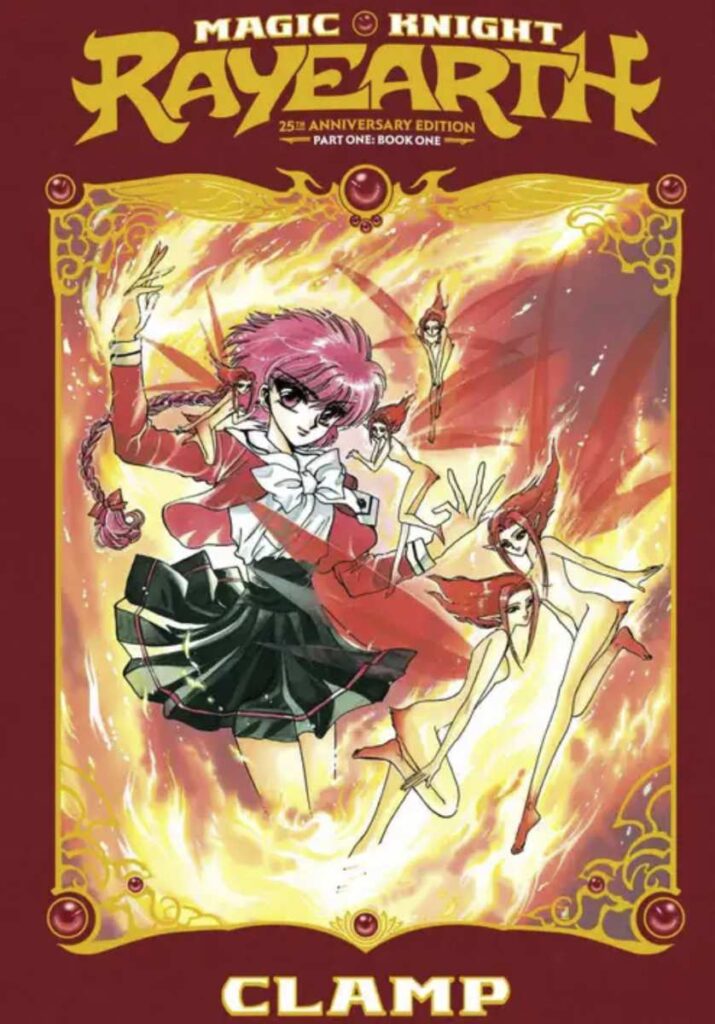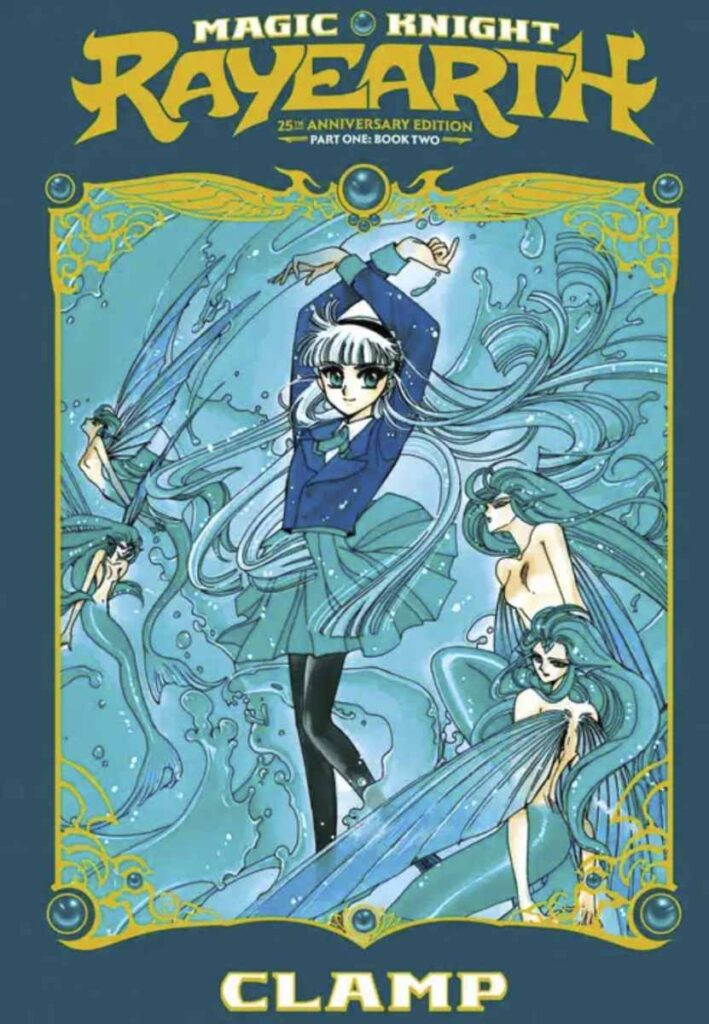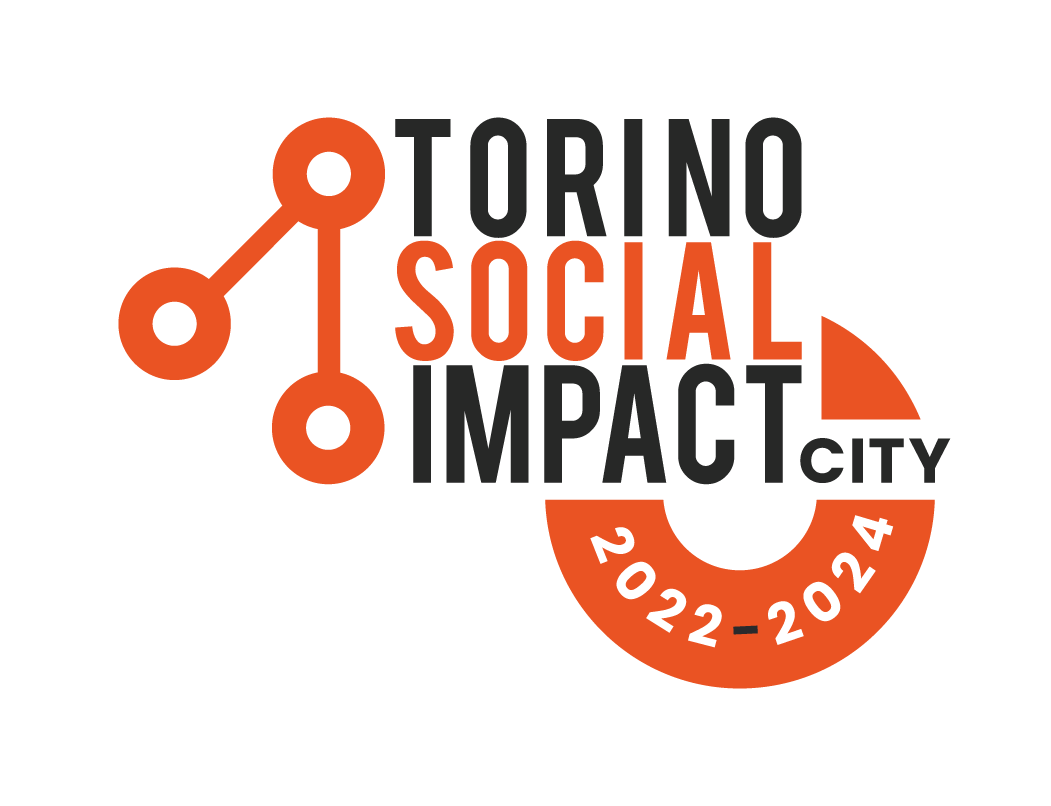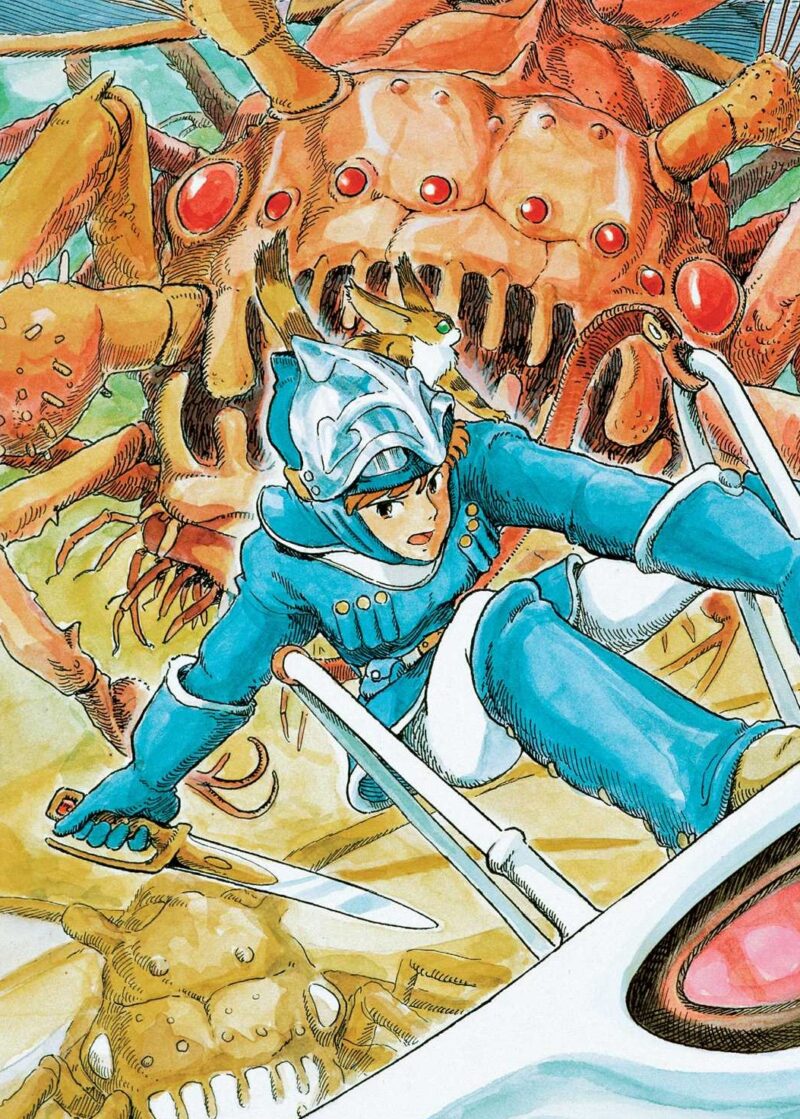
Magic Knight Rayearth Explained | CLAMP’s Genre-Bending Shōjo Classic
Year
Length
Magic Knight Rayearth represents a unique example in CLAMP‘s extensive manga production, as it features a diverse range of genres and a narrative that challenges the tropes of shōjo, or manga aimed at girls. A two-part series published from 1993 to 1996, the manga comprises only six volumes, yet it managed to capture the attention of both Japanese and Western audiences.
On a Mission to Restore the World’s Balance
Hikaru, Umi, and Fu, three middle school girls, meet by chance while on a field trip to the Tokyo Tower. During the visit, they find themselves transported to the fantastic world of Cephiro, summoned by the will of Princess Emeraude. Here, they learn from the sorcerer, Guru Clef, their mission. They have to save the princess, captive of the high priest Zagato, and with her, the fate of this world. Under the guidance of Mokona, the trio must venture to become the knights of legends and revive the Rune Gods – their only chance to return home. And while the premise of saving a captive princess might feel like a cliché, the manga’s concept is all but common.

Magic Knight Rayearth: CLAMP’s Early Work
The all-female collective known as CLAMP is regarded today as an icon of the manga scene. Four artists with a defined identity, a trademark art style, and a rich production that encompasses numerous genres. However, initially the group included eleven members, who had first come together to create doujinshi (self-published fan work). Together, they wrote their first original manga, RG Veda, which debuted in 1989 and launched CLAMP into the publishing world. However, by March 1993, seven members had left the group, leaving only the current four: Mokona, Nanase Ohkawa, Tsubaki Nekoi, and Satsuki Igarashi. And in the winter of that same year, Magic Knight Rayearth began its serialization.
The manga was commissioned by the shōjo manga magazine Nakayoshi. In that period, the magazine was publishing Sailor Moon and wanted a series aimed at a younger audience. In the wake of the latter’s success, CLAMP was able to submit an unconventional story that allowed them to experiment. Due to its intended audience, Magic Knight Rayearth‘s narrative is more linear than the collective’s later works. Nonetheless, the art style already holds all those characteristics that make it CLAMP. Beautifully drawn panels, full of details and movement, manage to convey emotion and bring its fantasy world to life. However, due to the manga being so short, the pace results in rushed scenes. This leaves little time for the reader to appreciate the world and become acquainted with its characters.

When Magical Girls, RPG fantasy, and Mecha meet
Inspired by the growing popularity of RPG video games in Japan, the world of Magic Knight Rayearth possesses a strong identity. Cephiro is a utopian land that relies on the will of a single person—the Pillar—to thrive. The Pillar, now Princess Emeraude, is the ruler whose sole duty is to keep the world’s peace through prayer. Such a balance is a delicate one to maintain, and the consequences of Emeraude’s disappearance are dire. By the time of their arrival, corruption and monsters are wreaking havoc upon the land and its inhabitants. Moreover, their role as knights is not just titular. While they possess elemental powers, similar to the protagonists of W.I.T.C.H., Hikaru, Umi, and Fu also sport swords and armors, forged by the master smith Presea.
Most notably, the manga unites the magical girl genre with mecha. While the team of heroines and the focus on friendship, elements popularised by Sailor Moon, come from the former, the influence of the latter can be found in the three Rune Gods. Said gods take the form of giant robots that the girls must pilot in the battle against Zagato. Moreover, the manga is also one of the first examples of isekai. Isekai are stories whose protagonists are transported to another world, such as in Rumiko Takahashi’s Inuyasha.

How this Manga Series deconstructed the Trope
However, Magic Knight Rayearth‘s innovation does not lie solely in its amalgamation of genres. Its seemingly simple narrative holds a revelation that both subverts the trope of shojo manga and changes the story’s direction. (SPOILERS AHEAD) Only after defeating Zagato do the knights discover the actual cause behind Cephiro’s destruction. As the Pillar, Emeraude had to devote her whole existence to her role. But she had fallen in love with Zagato, a shift of focus that brought Cephiro to the brink of collapse. The Princess knew that the only way to restore the balance was for the knights to kill her, and Zagato was trying to protect his beloved from that fate. As a result, Hikaru, Umi, and Fu had only one choice. To put an end to Emeraude’s grief-induced rampage and save the world.
This narrative choice represents a significant subversion of the standard shojo genre, particularly in the magical girl subgenre. Despite being no stranger to themes of death and sacrifice, no story had ever taken such a grim turn. Only much later would works like Madoka Magica explore such storylines in depth. While most heroines fight against forces of evil that feel justifiable to defeat, that is not the case for Magic Knight Rayearth. Here, the protagonists must kill two innocents because of their love – not their malicious intentions or wrongdoings. A choice that haunts the girls and sets in motion the events of the second part of the series. In conclusion, despite representing a first experiment at shojo, the series still managed to stay true to CLAMP’s commitment to emotional resonance and nuanced storytelling.
Magic Knight Rayearth received a two-season anime in 1994, which counterbalances the rushed pacing of the manga, as well as three OAVs and various video games.
Tag
Buy a ☕ for Hypercritic









